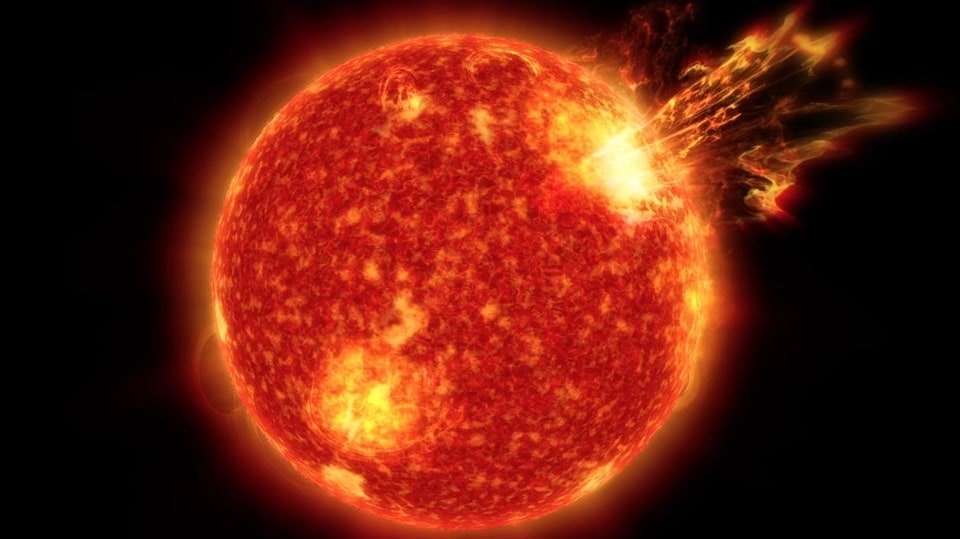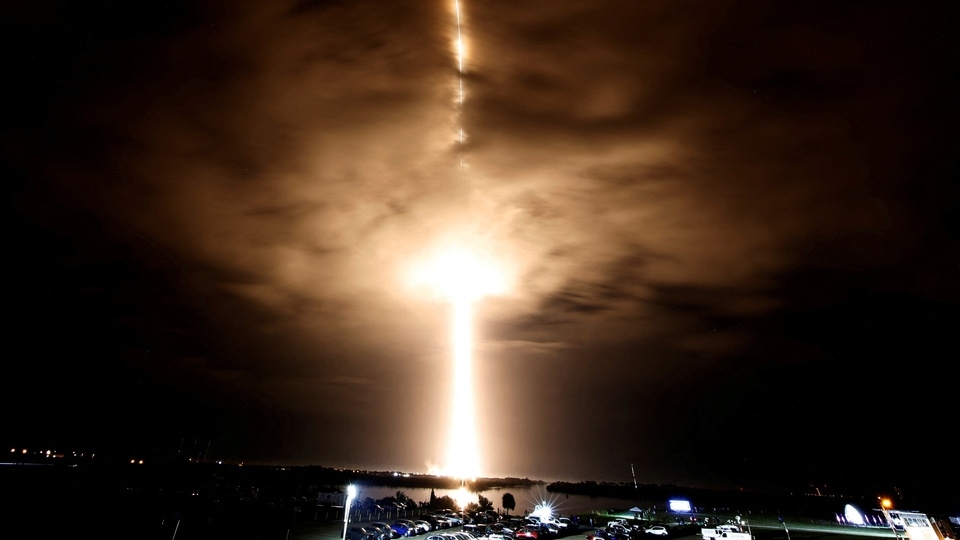Solar flare hurls CME into space, sparking risk of geomagnetic storm
A geomagnetic storm could be on the cards soon due to a slow-moving CME that was hurled into space by a solar flare. Know details.






 View all Images
View all ImagesWhile Earth's magnetosphere deflects most solar activity carried by solar events, some charged particles seep through. These energetic particles cause magnetic disturbances, classified as Geomagnetic storms. These supercharged storms can wreak havoc on all forms of wireless communication, including GPS, mobile networks, and satellite communication. Power grids are also susceptible to fluctuations and could potentially sustain irreversible damage.
In light of the danger that is posed by geomagnetic storms, forecasters at the National Oceanic and Atmospheric Administration (NOAA) have issued a warning against a potential CME impact that could hit Earth and spark a Geomagnetic storm soon.
Geomagnetic storm danger
According to a report by spaceweather.com, NOAA forecasters have revealed that a Coronal Mass Ejection (CME) was hurled into space by an M4.8-class solar flare. Alarmingly, this CME is moving towards Earth and could graze the planet's magnetic field and could spark a minor G1-class geomagnetic storm tomorrow, June 27.
The report stated, “Minor G1-class geomagnetic storms are possible on June 27th if, as NOAA models suggest, a CME might graze Earth's magnetic field. The slow moving CME was hurled into space on June 22nd by an M4.8-class solar flare.”
Can it cause damage?
Although this solar activity might seem harmless due to the distance of the Sun from our planet, it can cause major damage. As solar flares travel out directly from the flare site, if we can see the flare, we can be impacted by it. While geomagnetic storms affect tech, they are also the reason behind stunning streaks of green light across the sky known as Northern Lights or Aurora Borealis.
NASA's SOHO satellite
NASA's SOHO (Solar and Heliospheric Observatory) is a satellite that was launched on December 2, 1995. It is a joint project between NASA and the European Space Agency (ESA) to study the sun, its atmosphere, and its effects on the solar system. It is equipped with 12 scientific instruments, such as an Extreme Ultraviolet Imaging Telescope (EIT), Michelson Doppler Imager (MDI), LASCO (Large Angle and Spectrometric Coronagraph), and others. SOHO captures images of the sun's corona, measures the velocity and magnetic fields of the sun's surface, and observes the faint corona around the sun.
Catch all the Latest Tech News, Mobile News, Laptop News, Gaming news, Wearables News , How To News, also keep up with us on Whatsapp channel,Twitter, Facebook, Google News, and Instagram. For our latest videos, subscribe to our YouTube channel.































